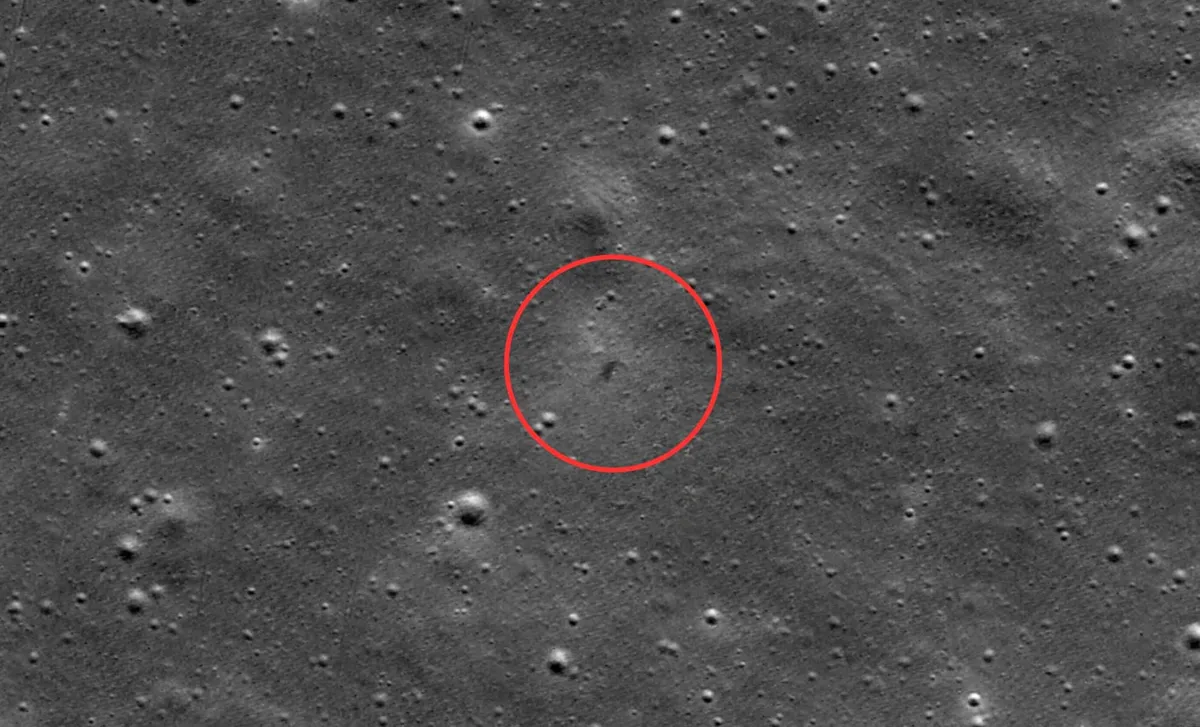
On June 11, NASA’s Lunar Reconnaissance Orbiter (LRO) unveiled a striking view of the impact site for the Hakuto-R Mission 2 on the Moon's surface. This latest imagery reveals fresh scarring on the lunar terrain, confirming that ispace's RESILIENCE lander crash-landed in Mare Frigoris, a geologically fascinating volcanic plain. This incident marks the second unsuccessful attempt by ispace to achieve a soft landing on the Moon, adding to their challenges in lunar exploration.
The SMBC x Hakuto-R Moon lander, known as RESILIENCE, was launched on January 15, 2025, aboard a privately funded spacecraft, representing a significant step in Japan’s ambitions to create a commercial lunar presence. Unfortunately, despite its optimistic name, the lander suffered a "hard landing" on June 5, failing to achieve its intended touchdown. The NASA LRO Narrow Angle Camera, operating from 50 miles above the lunar surface, detected the aftermath of the crash, revealing a darkened surface smudge — the unmistakable signature of a recent impact.
The images taken by the LRO display a noticeable dark patch encircled by a lighter, halo-like ring. This contrast is attributed to the lunar regolith, which consists of the Moon’s fine dust and rocky debris, being propelled outward and scouring the surrounding area. The size and dispersion of the ejecta strongly indicate a high-velocity collision. These stunning images not only confirm the unfortunate fate of the lander but also provide valuable insights into the mechanics of impacts on airless planetary bodies.
Launched in 2009, the Lunar Reconnaissance Orbiter has established itself as one of NASA’s most vital assets in the field of lunar science. Managed by NASA’s Goddard Space Flight Center, the LRO is equipped with a suite of seven instruments, including the Lunar Reconnaissance Orbiter Camera (LROC) system, which has transformed our ability to observe the Moon. Its high-resolution images have documented a range of significant features, from Apollo landing sites to geological formations and impact sites of failed landers, making it an essential tool for lunar mission planning.
By meticulously documenting the site of RESILIENCE’s crash, the LRO continues to support not only scientific research but also commercial accountability, providing both public and private partners with an impartial record of lunar surface events. Each new impact site tells a compelling story of ambition, risk, and the technological limits of space exploration, contributing to a broader knowledge base that will guide future missions.
The crash occurred in Mare Frigoris, a relatively flat area located north of the Moon’s equator, which is both historically significant and geologically active. This region features wrinkle ridges and fault-like structures formed by the Moon's gradual cooling and contraction, making it of high interest to planetary geologists. The fresh impact in this terrain introduces a new variable for scientific modeling, allowing researchers to study how recent mechanical disruptions influence existing tectonic features.
The dark spot and the surrounding ejected regolith from the crash site are expected to remain visible for decades, serving as both a cautionary symbol and a target for ongoing research. This fresh impact adds to the scientific knowledge of Mare Frigoris, highlighting its importance in lunar geology.
This crash signifies ispace’s second consecutive failure to successfully land softly on the Moon. The previous Hakuto-R Mission 1 in 2023 similarly ended in an impact. Despite these setbacks, ispace continues to focus on its long-term objectives in space logistics and lunar resource development. Such challenges underscore the complexity of Moon landings — a feat that has only been accomplished by a select few state-sponsored programs. Nevertheless, each attempt brings valuable lessons that could pave the way for future successes in lunar exploration.